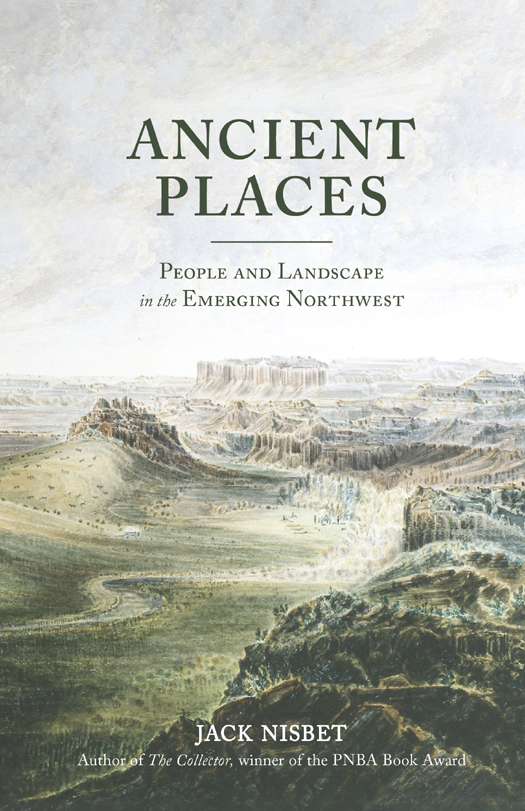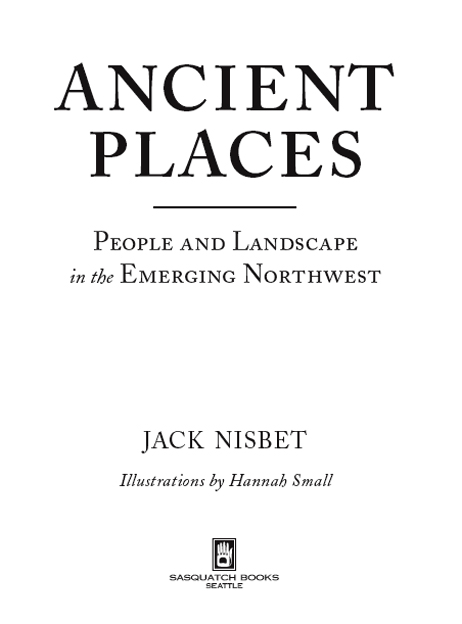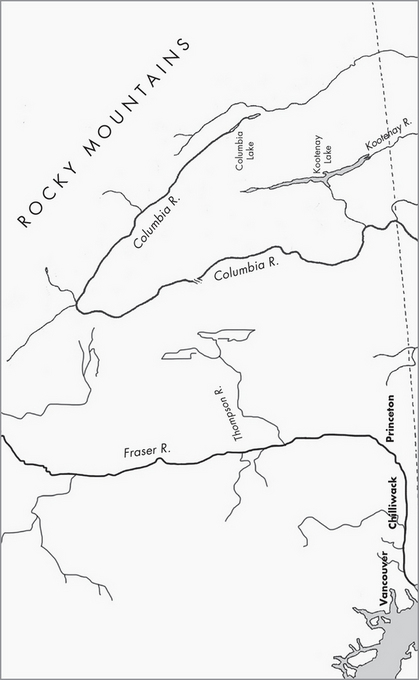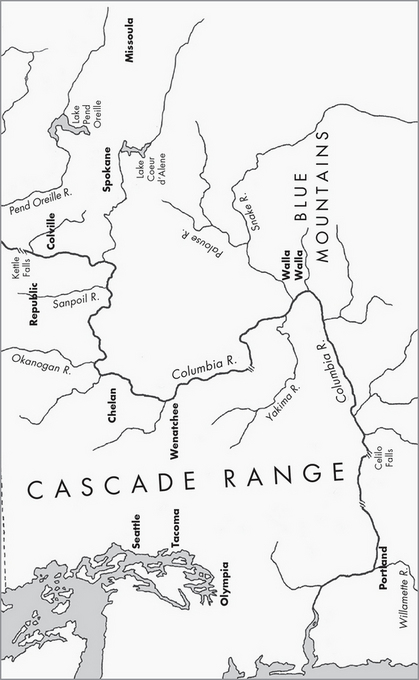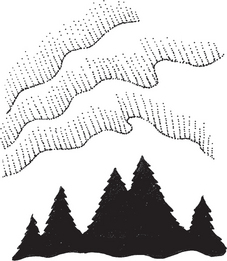Copyright 2015 by Jack Nisbet
All rights reserved. No portion of this book may be reproduced or utilized in any form, or by any electronic, mechanical, or other means, without the prior written permission of the publisher.
Published by Sasquatch Books
Editor: Gary Luke
Production editor: Em Gale
Cover illustration: Aspen Camp 27 Miles from Cow Creek, James Madison Alden, 1860; Alden Sketch #17, Entry 221, Record Group 76; National Archives at College Park, College Park, MD.
Design: Joyce Hwang
Illustrations: Hannah Small
Copyeditor: Elizabeth Johnson
Library of Congress Cataloging-in-Publication Data is available.
ISBN: 978-1-57061-980-9
eBook ISBN: 978-1-57061-981-6
Sasquatch Books
1904 Third Avenue, Suite 710
Seattle, WA 98101
(206) 467-4300
www.sasquatchbooks.com
Portions of some of these essays have appeared in Cascadia Chronicle, the North Columbia Monthly, the Inlander, We Proceeded On, and HistoryLink.org.
v3.1
For Claire
In memory of Ann, Merle, and John
C ONTENTS
I
C HASING THE
E LECTRIC F LUID
Innumerable Luminous Pieces
In early November 1792, Hudsons Bay Company fur agent David Thompson led a crew of hungry men through the wilderness of lakes that extended north and west of their York Factory headquarters on the bay. They had found the fishing and hunting very poor around their isolated trade house and had fanned out in hopes of better luck. Thompson and a lanky Scottish lad named Andrew Davy tried Lake Susquagemow (now called Landing Lake in modern Manitoba)a sizeable sheet of water around thirty miles long and four or five miles wide. Since the lakes ice was not yet thick enough for secure walking, the pair roamed its edges in search of grouse and hare. After some time, they came upon a frozen marsh, where they spotted a beaver lodge surrounded by a small pool of open water, which the animals kept ice-free by swimming around it in the evening.
By the time Novembers early dusk fell, Thompson and Davy, muskets in hand, had settled into watchful positions near the domed lodge. After a full moon rose over the east end of the lake, a solitary beaver emerged from one of the entry tunnels. Davy eased his firearm into position and pulled the trigger. The musket misfired with a loud snap; the beaver slapped the water with its tail as if to bid us good night, wrote Thompson, and plunged into his house.
That slap ended any hope of a successful hunt. Yet the evening was pleasant, and the pair continued to loiter beside the marsh until nearly eleven oclock. They were about to call it a night when a brilliant light, rivaling the recent moonrise, appeared over the east end of the lake. It was a Meteor of globular form, and appeared larger than the Moon.
The meteorin Thompsons day, the term could apply to any visual atmospheric event, from hailstones to a lightning flashseemed to travel directly down the length of the lake toward them, descending through the air as it approached. When within three hundred yards of us, it struck the River ice with a sound like a mass of jelly, Thompson wrote. Then it dashed into innumerable luminous pieces, and instantly expired. Andrew would have run away but he had no time to do so; curiosity chained me to the spot.
Next morning, true to his curious nature, Thompson returned to the beaver marsh to look for evidence of the crash. He was astonished to find none whatsoever, even though the snow clearly showed his lightest footprints from the night before. He had read accounts of fiery meteorites in Europe that exploded with a loud noise or threw off a fusillade of stones, but the only sound he could recall from this event was the flop of tossed jelly.
Thompson had arrived at Hudson Bay almost a decade earlier, as a young teenager, and he had traveled extensively throughout the north country. On more than one occasion, when journeying along an expanse of water, he had observed phenomena that are peculiar to such a surface. He had noticed that during the early part of each winter, clear and calm nights gave rise to innumerable very small luminous, meteoric points, which are visible for the twinkling of an eye, and disappear. When these momentary sparkles gained intensity, he found, the wind was bound to rise.
Several days later, the fur agent was back near the same marsh on Lake Susquagemow, hunting for game in an open grove of aspen trees. About six in the evening, another concentrated light from the lakes east end lit up the premoon darkness. Thompson thought that this meteor appeared larger than the first one he had seen, but not as bright, and he tried to track it carefully. The glowing globe dove right into the aspen grove, at a height of about eight feet above the ground. As it struck the trees, pieces flew from it, and went out it passed close by me striking the trees with the sound of a mass of jelly although it must have lost much of its size from the many trees it struck, it went out of my sight, [still] a large mass.
Searching for answers about the nature of these strange gelatinous lights, Thompson went out the next day and examined the trees that had been struck, only to find that they were completely undamaged. Even the white flour-like substance that coated the aspens bark showed no sign of any disturbance. I was at a loss what to think of it, its stroke gave sound, and therefore must have substance. These two Meteors were, perhaps, compressed bodies of phosphoric air, but without the least heat, for had there been any, the second Meteor passed so near to me I must have felt it.
David Thompson grew up in London with his Welsh mother, who probably introduced him to that cultures traditional folktales about fairy fire, also known as will-o-the-wisps or swamp gas. In many such stories, mischievous figures use the eerie lights to lure travelers into danger around spooky marshlands. At some point, the flames are extinguished, and the victims are left to sink into the fens.
Thompsons description of the mysterious lights he saw over Lake Susquagemow evoke will-o-the-wisp tales from around the world. Many accounts describe their appearance as orbs of some form, and most modern scientists explain them as a chemical phenomenon. The notion of flammable chemicals trapped within the marshes of northern Manitoba connects logically with the natural gas now being extracted from that region. Although Thompson did not record any particular color during either of his two sightings, eyewitnesses often describe the faint blue-green and yellow-orange hues familiar from laboratory Bunsen burners. Swamp-gas accounts rarely mention noise, so it is Thompsons inclusion of those




